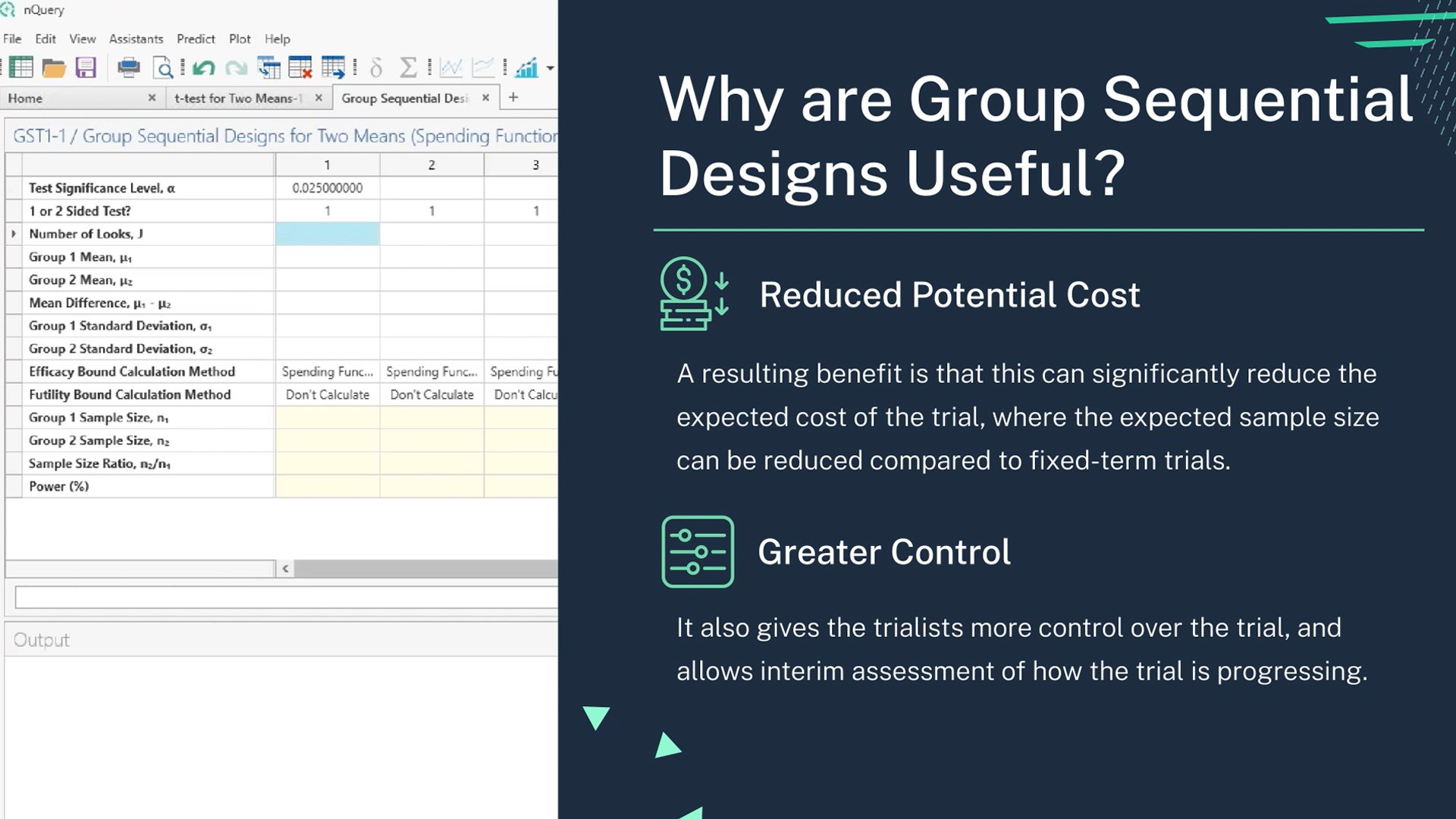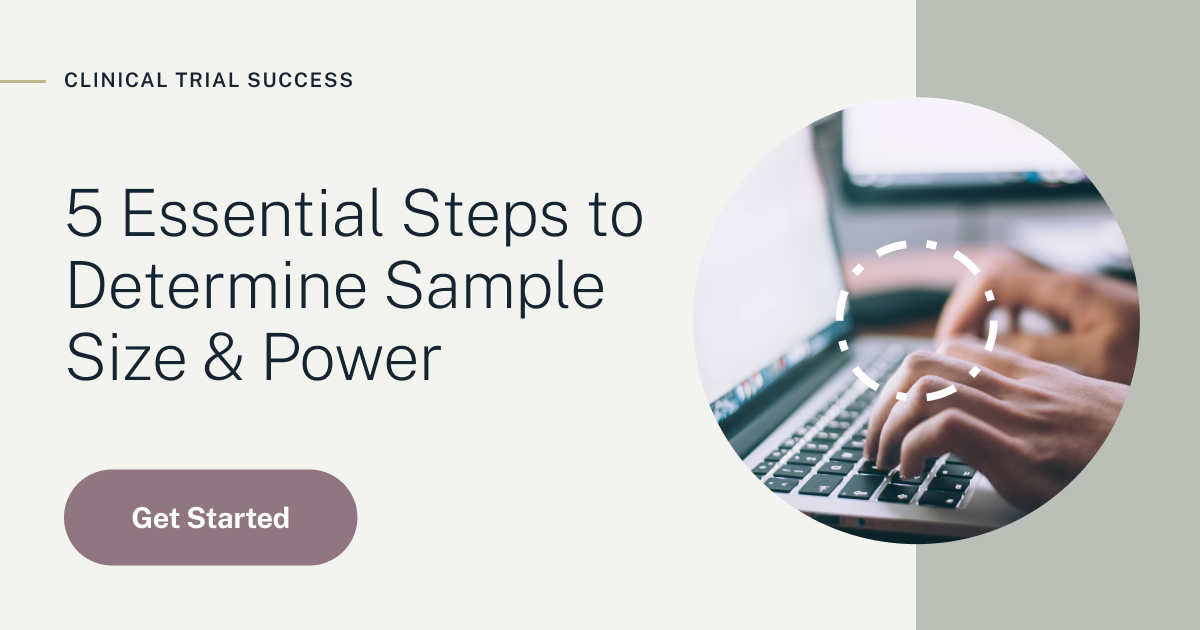Design Considerations for Bioequivalence Studies
- Example 1 - Equivalence Test for Crossover Designs for Log-Scale Ratio.nqt
- Example 2 - Equivalence Test for Crossover Designs for Log-Scale Ratio.nqt
- Example 3 - Equivalence Test for Crossover Designs for Log-Scale Ratio.nqt
Webinar Playback
Design Considerations for Bioequivalence Studies
Cross-over Design Choices, Boundary Selection and Determining Sample Size
In this guide, Denis Desmond, Research Statistician at nQuery, has explored how to design effective and regulatory-ready bioequivalence studies by focusing on three essential areas:
-
Choosing the Right Crossover Design for Bioequivalence
-
Addressing Variability and Design Complexities
-
Accurate Sample Size Planning Using nQuery
Learning objective of this tutorial:
In this guide, you will get an overview of bioequivalence studies, crossover trials, their advantages and disadvantages, and some of the crossover designs. This webinar also covers sample size determination for crossover trials and demonstrates several worked examples in nQuery.
Bioequivalence studies are a type of clinical trial in which the goal is to demonstrate that there is no significant difference between two formulations of a drug for the rate and extent of absorption of the active compound, i.e., that the two formulations have equivalent bioavailability. Bioequivalence studies are a key element of generic drug development, and most commonly utilise crossover trial designs.
Key Statistical Approaches Covered in This Webinar
Selecting the Right Design for Bioequivalence
-
Overview of standard and replicate crossover designs (e.g., 2x2, 3x3, 2x4)
-
Matching study design to drug characteristics (e.g., high variability, narrow margins)
-
Regulatory considerations for design choice (FDA, EMA guidance)
Addressing Design Pitfalls in Bioequivalence Trials
-
Handling high intra-subject variability and carry-over effects
-
Common mistakes in washout periods and treatment sequencing
-
Design adaptations to avoid study failure or rejections
Accurate Sample Size Planning
-
Methods for calculating appropriate sample size for equivalence testing
-
Understanding power, variability, and their influence on sample size
-
Step-by-step nQuery demonstrations for real-world BE scenarios
Frequently Asked Questions About Bioequivalence Study Design
Why is bioequivalence study design crucial in generic drug development?
Bioequivalence studies ensure that a generic formulation performs similarly to an existing reference drug in terms of absorption and availability of the active compound. An inadequate design may result in misleading conclusions or regulatory rejection. With regulatory agencies requiring precise pharmacokinetic comparisons, using a robust and efficient study design is critical to demonstrating bioequivalence accurately.
How do crossover designs support bioequivalence studies?
Crossover designs are well-suited for bioequivalence studies because each subject receives multiple treatments, reducing variability and increasing efficiency. The standard 2x2 crossover is simple and powerful, but in cases of high variability, carry-over concerns, or narrow bioequivalence margins, higher-order designs may be required to maintain reliability and power.
What are the advantages and disadvantages of using a 2x2 crossover design?
The 2x2 crossover is easy to implement, controls for inter-subject variability, and requires a smaller sample size than parallel designs. However, it may not be suitable if carry-over effects, subject dropout, or highly variable drugs are expected, in which case more complex designs (e.g., 3-period or replicate designs) may offer better solutions.
When should higher-order or replicate designs be considered?
Higher-order crossover designs are useful when addressing within-subject variability or regulatory needs for scaled average bioequivalence. These designs provide more detailed data but require more periods, which can increase complexity, duration, and burden on subjects. They are often chosen for highly variable drugs or narrow therapeutic windows.
How is sample size determined for crossover bioequivalence trials?
Sample size depends on the expected variability (within-subject CV), the bioequivalence limits (typically 80–125% for AUC and Cmax), and the chosen design. In a crossover setting, fewer subjects may be needed due to reduced variability, but precise calculations are essential to ensure power. This webinar includes worked examples using nQuery to demonstrate sample size estimation in various scenarios.
What is the role of boundary selection in bioequivalence testing?
Bioequivalence is typically assessed using confidence intervals to ensure the test/reference ratio falls within pre-defined limits (commonly 80–125%). Selecting appropriate boundaries is essential for regulatory compliance and reflects the acceptable range for clinical equivalence. These boundaries influence design decisions, sample size, and interpretation of results.
How does this guide help improve bioequivalence study planning?
This guide provides a clear framework for selecting appropriate crossover designs, understanding their pros and cons, and determining required sample sizes using real-world scenarios. It features step-by-step demonstrations in nQuery, helping researchers translate theoretical considerations into practical design decisions.
About nQuery
nQuery helps make your clinical trials faster, less costly and more successful. It is an end-to-end platform covering Frequentist, Bayesian, and Adaptive designs with 1000+ sample size procedures.
nQuery Solutions
- Sample Size & Power Calculations: Calculate for a Variety of frequentist and Bayesian Design
- Adaptive Design: Design and Analyze a Wide Range of Adaptive Designs
- Milestone Prediction: Predict Interim Analysis Timing or Study Length
- Randomization Lists: Generate and Save Lists for your Trial Design
Start your unlimited 14-day trial.
Who is this for?
This will be highly beneficial if you're a biostatistician, scientist, or clinical trial professional that is involved in sample size calculation and the optimization of clinical trials in:
- Pharma and Biotech
- CROs
- Med Device
- Research Institutes
- Regulatory Bodies














